The water start is a game changer in your windsurfing progression. This move will give you more confidence to head out in stronger winds, smaller boards and bigger waves. Forget scraping your knees whilst climbing on the board to up-haul, if you thought windsurfing was fun before, just wait until you learn how to water start.
The water start can give you a lot more time on the water and once mastered, it is a lot easier and uses far less energy than up-hauling.
Your windsurfing ability – You should already be able to beach start and have basic intermediate non-planing skills.
Conditions – Wind speed around 15 – 25 knots. Find a beach with a nice shallow gradient, which means you can practice deeper and deeper beach starts. Not having to swim all the time will save you a lot of energy. Somewhere nice and hot would also be ideal!
Equipment – 4.5m – 6.5m sail size and a board big enough that you can uphaul on (just in case you get tired of trying and a rest)
The best way to practice the water start is to simply dedicate a whole session, or however long it takes, to the move. This has to be a conscious decision and not spur of the moment once you have fallen in and already tired on a wavy and windy day.
The earlier you learn to water start in your windsurfing career, the quicker you will learn other skills and you will progress at a faster rate.
Whether you are a windsurfing instructor and want to use this guide for your coaching, or an intermediate wanting to progress, we hope you find our water start tips and techniques helpful in your windsurfing career.
Water Start Technique
Here is our how to water start guide:
- Sail preparation
Step 1 with the water start is to prepare the sail through the rig recovery techniques you have practised in shallower waters, similar to beach starting.
Your ideal set up will have the board facing into the wind and the sail across the wind. Grab onto the mast with your front hand and get the sail out the water by lifting the sail and swimming into the wind.
Board into the wind
Front hand onto mast
Free sail from the water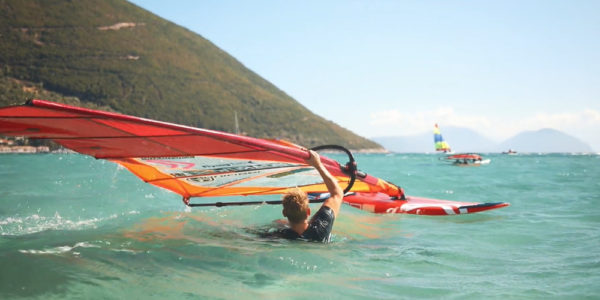
- Board preparation
Now the sail is out the water, shuffle your hands down the mast until your back hand can hold onto the boom. After your back hand is on you can now place your front hand on the mast too, make your grip slightly wider than your normal windsurfing hands position.
Bear the board away from the wind by pushing with your front arm. The perfect water start position is the image below, with the board now almost facing across the wind and your are in control of the sail.
Once here, you should now place your back foot on the board, in between the front and back footstraps and along the centre line of the board. Remember to keep your front leg dragging deep in the water, this will stop you drifting.
Hands on boom
Push front hand away to steer board downwind
Back foot on centre line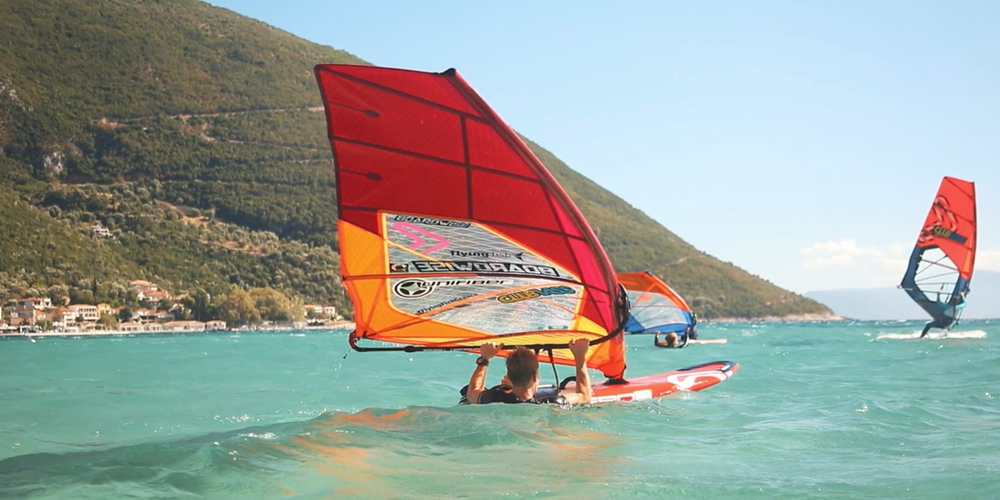
- Time to get out the water
Start to power up the sail by extending your front arm up and forwards, and at the same time tuck your back foot underneath your bum.
As your start to come up out the water, keep your head forward and towards the mast foot, as demonstrated in the picture below. By having your head in this position helps keep your body forward and above the board, which will maximise your chance of water start success.
If there is not much wind, look upwind and wait for any gust that may help get you up on the board.
Power up the sail by extending front up
Tuck back leg under your bum
Keep head forward, towards the mast foot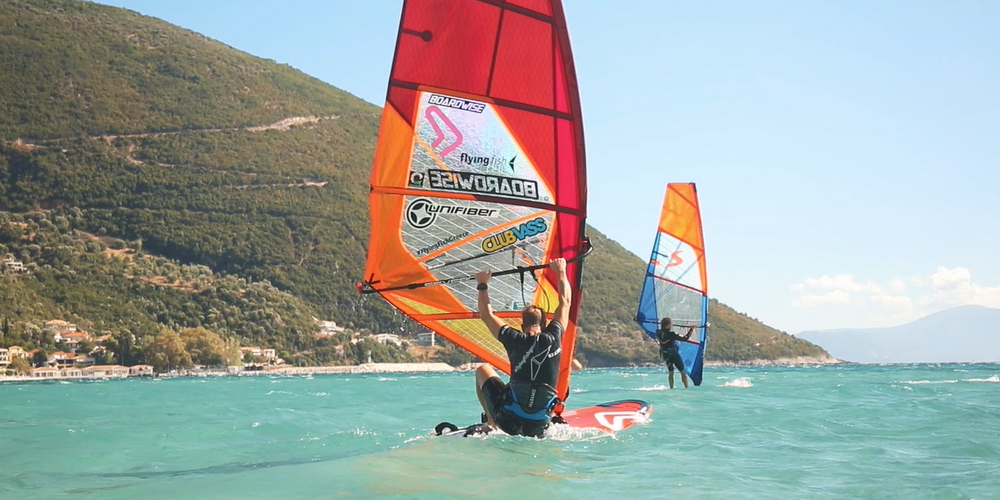
- Think you are up?
Before you put you front foot on the board and sail away, make sure you are almost all the way up and your body weight is centred on the board.
After you are up on the board, keep low and control the sail until you are comfortable, then sail away!
Don’t put front foot on board until your whole body is over the board
Keep low to control power
Practice in both directions and all conditions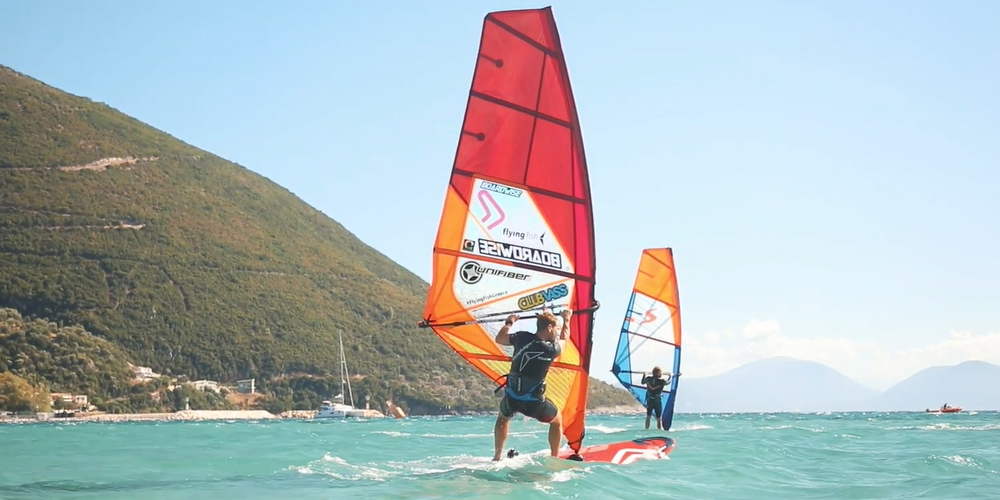
Water Start Tips
There are some great tips and tricks to utilise whilst on your journey to learn how to water start. Being able to recover the rig effectively and achieving a front leg drag whilst windsurfing will significantly help you understand the water sport process.
Rig recovery
The rig recovery can be one of the hardest parts of the water start to master. Your board and sail need to positioned just right for an effective water start, here are the key points below:
Ideal equipment set up should be board facing into the wind, and the rig with the mast across the wind.
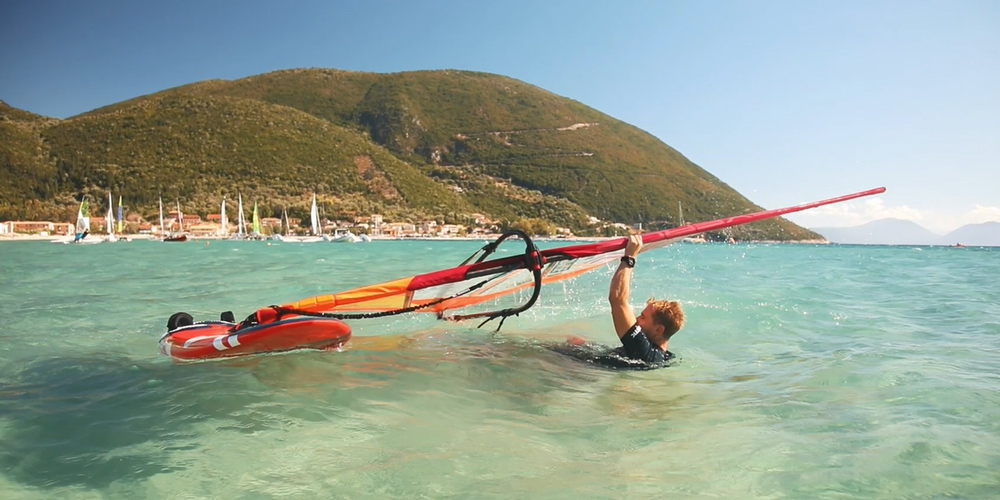
Place front hand on the mast above the boom, and start to free the sail from the water by slicing it up and into the wind. It is often easier if you swim with your feet up into the wind at the same time.
Once the sail is full out the water, shuffle down the mast until your back hand can reach the boom. Make sure you back hand is slightly further down the boom than it normally is when windsurfing.
Now the sail is free and your back hand is on the boom (front is still on the mast), practice turning and changing the boards direction. This is achieved by putting pressure through the mast, similar to what you have practiced when learning to beach start. Remember to keep the sail low at this point, if too much is showing to the wind, it could power up and you will lose control of the rig.
The front leg drag
The front leg drag is simulating the second half of the water start, and is something people often get wrong when learning.
Prepare by getting your hands wide on the boom, then have some faith and get that front leg dragging in the water. Start with just your toes and keep working down until your knee is submerged in the water.
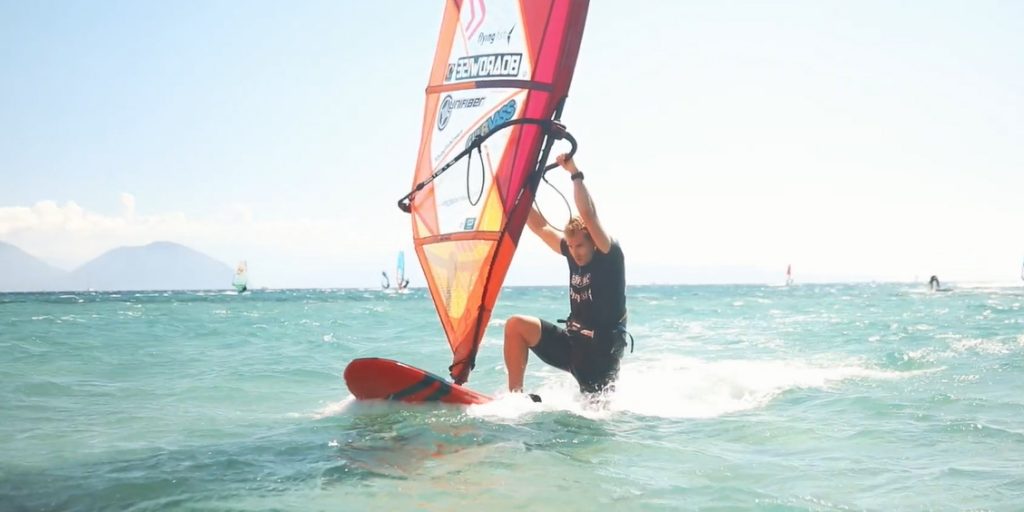
The trick here is to have your upper body as far inboard and over the mast foot as possible. Having your arms extended and all your weight going through the mast is the key to success for the leg drag.
Set yourself up for practicing
Our final tip when learning how to water start is to fall in, on purpose, slowly and in control into the perfect water start position. From here you can practice the bit everyone wants to do, get up and back on the board by using the wind and water starting!
How not to water start
These common mistakes are typical when learning how to water start. If you get stuck, revisit the steps or go back in shallower waters and keep trying!
Placing both front and back foot on the board at the same time
Trying to stand upright too early
Bending front arm when trying to power the sail up
Not keeping low once up, the sail may overpower and you will end up in the water again





Recent Comments